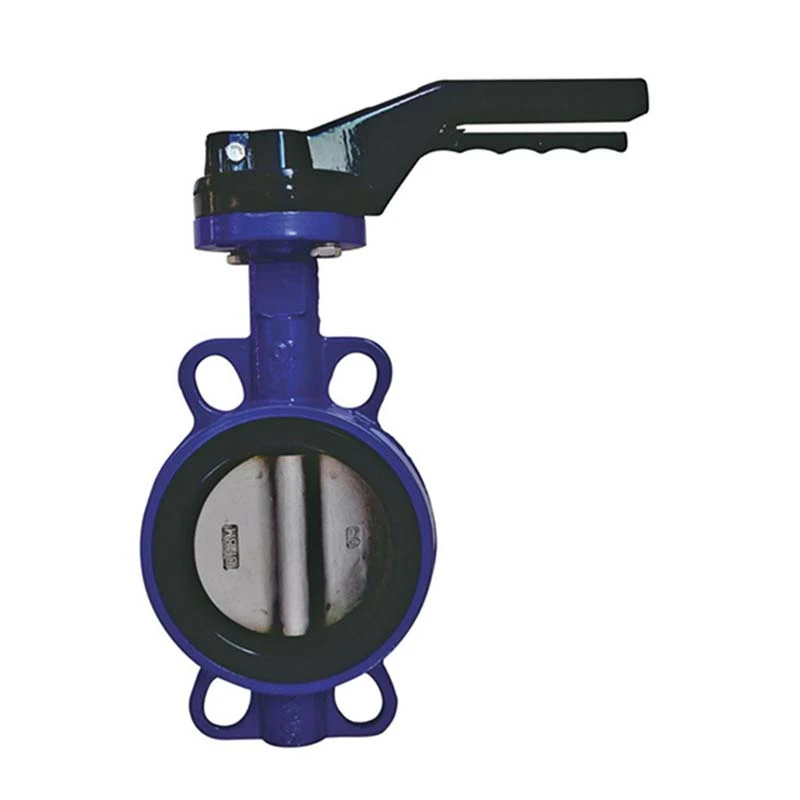Dec . 11, 2024 09:47 Back to list
Wafer Type Butterfly Valve Design for Optimal Flow Control Efficiency
Understanding Wafer Style Butterfly Valves A Comprehensive Guide
In the world of industrial fluid control, the wafer style butterfly valve stands out as a preferred choice for many applications. Designed for simplicity, efficiency, and reliability, these valves play a crucial role in regulating the flow of liquids and gases in a range of systems, from water treatment plants to chemical processing facilities. This article delves into the characteristics, advantages, applications, and maintenance of wafer style butterfly valves.
What is a Wafer Style Butterfly Valve?
A wafer style butterfly valve is a type of quarter-turn valve that consists of a circular disc or plate (the ‘butterfly’) mounted on a shaft. The valve is called wafer style because it is designed to fit between two flanges in a pipeline, with no need for additional flanged connections. This compact design makes it a popular choice where space is limited, and it can be easily installed between existing piping components.
The fundamental working principle of a butterfly valve involves the rotation of the disc. When the valve is in the closed position, the disc blocks the flow. When the valve is opened by turning the handle, the disc rotates 90 degrees, allowing fluid to flow freely through the pipeline. This simple mechanism allows for quick and easy operation, making it suitable for various controlling applications.
Advantages of Wafer Style Butterfly Valves
1. Space Efficiency The compact design of wafer style butterfly valves enables them to occupy less space compared to other valve types. This is particularly advantageous in installations where space is a premium.
2. Lightweight Traditionally made from materials such as PVC, stainless steel, or cast iron, these valves are lighter than their flanged counterparts. This lightweight characteristic makes handling and installation significantly easier.
3. Cost-Effective Due to their simple design and manufacturing processes, wafer style butterfly valves are often more affordable than other types of valves. This cost-effectiveness makes them a popular option for many industries.
4. Quick Operation The quarter-turn operation allows for rapid opening and closing of the valve. This feature is critical for processes that require immediate control over fluid flow.
wafer style butterfly valve

5. Versatility Wafer style butterfly valves can be used for a wide variety of applications, accommodating different types of fluids, including water, oil, gas, and other chemicals. Their versatility extends to pressure ratings and temperature ranges, making them adaptable to various environmental conditions.
Applications
Wafer style butterfly valves find applications in numerous sectors due to their advantages. Common areas of use include
- Water Treatment They are widely used in water and wastewater treatment plants for flow regulation and isolation. - HVAC Systems In heating, ventilation, and air conditioning systems, these valves help control airflow and maintain system efficiency. - Chemical Processing Their compatibility with a range of corrosive substances makes them ideal for use in chemical manufacturing and processing environments. - Oil and Gas Industry Wafer style butterfly valves are utilized in pipelines to manage the flow of crude oil and natural gas.
Maintenance
While wafer style butterfly valves require minimal maintenance due to their robust design, regular inspections are essential to ensure optimal performance. This includes
- Routine Checks Regularly inspect the valve for signs of wear or damage, such as corrosion or leaks. - Lubrication Ensure the stem and seal components are appropriately lubricated to prevent operational issues. - Exercise the Valve Periodically open and close the valve to prevent sticking and ensure smooth operation.
Conclusion
Wafer style butterfly valves present a practical solution for fluid control across various industries. Their space-saving design, lightweight construction, cost-effectiveness, and ease of operation establish them as a preferred choice for both new installations and retrofits. With proper maintenance, these valves can provide reliable service throughout their operational life, contributing significantly to the efficiency and safety of industrial processes. Whether in water treatment, HVAC systems, or chemical processing, understanding the functionality and advantages of wafer style butterfly valves is key to optimizing fluid flow management in any operation.
Share
-
Reliable Wafer Type Butterfly Valves for Every IndustryNewsJul.25,2025
-
Reliable Flow Control Begins with the Right Ball Check ValveNewsJul.25,2025
-
Precision Flow Control Starts with Quality ValvesNewsJul.25,2025
-
Industrial Flow Control ReliabilityNewsJul.25,2025
-
Engineered for Efficiency Gate Valves That Power Industrial PerformanceNewsJul.25,2025
-
Empowering Infrastructure Through Quality ManufacturingNewsJul.25,2025